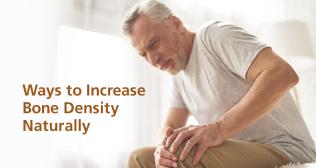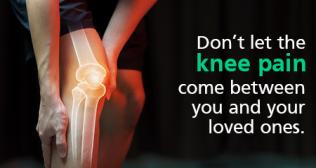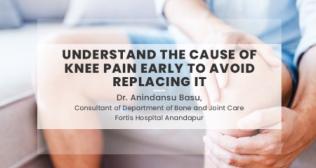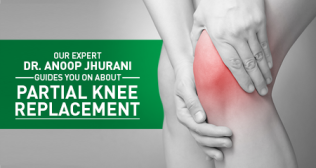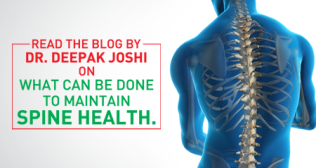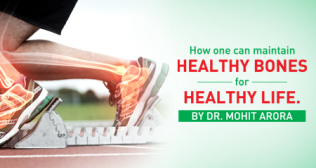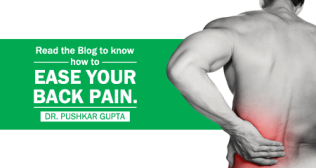
Sciatica: Understanding the Causes, Symptoms, and Treatment Options
Sciatica is a severe, sudden, and debilitating pain that is caused due to the compression of the sciatic nerve. The sciatic nerve is the largest nerve collection in the body. Irritation or inflammation of the nerve bundle due to trauma can lead to sciatica pain. There are many misconceptions about lower back pain and sciatica. If you have ever wondered what sciatica pain is, what causes it, and what the symptoms of sciatica nerve problems are, this blog explains in detail sciatica pain symptoms.
Anatomy:
The sciatic nerve is the largest nerve collection with a thickness of 2 cm. It contains nerves arising from the lumbar and sacral parts of the spine, forming a bundle. The nerve travels from the lumbosacral area of the spine through the hips to the leg. In the leg, it divides into many branches to supply the hamstrings, calf muscles, and leg and foot muscles.
Causes of Sciatica Pain:
Sciatica pain is mainly caused by inflammation and compression of the nerve. Inflammation causes nerve irritation, which in turn causes sciatica symptoms. Direct compression of the nerve also causes symptoms of sciatica nerve problems. Other causes include:
- Herniated or bulging intervertebral disc in the lumbar area
- Narrowing of the lumbar spinal area or the foramen in the vertebrae
- Misalignment of one vertebra over the other
- Muscle spasms of the lumbar or pelvic area
- Degenerative diseases of the vertebral discs
- Pregnancy
- Osteoarthritis
- Certain conditions like conus medullas syndrome or cauda equina syndrome
- Any tumors, blood collection due to hematomas, and abscesses can create a mass that causes symptoms.
Types of Sciatica:
There are two types of sciatica:
- True sciatica is caused by direct injury to the sciatic nerve
- Sciatica-like conditions that occur due to other reasons affecting the sciatic nerve bundle
- Features of Sciatica pain:
- Some of the interesting features of sciatica pain include the following:
- Sciatica is a prevalent nerve condition.
- There is no gender difference
- Peak occurrence of pain is seen in the fourth decade.
- There is a noted Lifetime incidence of 10% to 40% and an annual incidence of 1% to 5%.
- There is no established association with body height except in patients aged 50 to 60.
- Sciatica pain is rarely seen before 20 unless there is a history of trauma.
- Research shows it can occur genetically.
- Physical activity has varied effects on those with and without symptoms. Incidence increases in those with prior sciatic symptoms and decreases in those with no previous symptoms.
- It can be an occupational hazard in machine operators, truck drivers, and jobs where there is a chance for physically compromised positions.
Sciatica symptoms:
The sciatic nerve runs a long course, arising from the spine and ending in the foot. Hence, any irritation or compression in this nerve course can lead to sciatic pain symptoms.
- Pain in one side of the lumbar spine area that radiates to the same leg
- Pain is burning type or sudden shock-like in nature
- Pain aggravates while coughing, sneezing, bending, or lifting
- There can be tingling, numbing, or pins and needles in the legs and buttocks due to difficulty in the nerve signals reaching the brain
- Weakness of the same side of the leg is severe
- Heaviness on the same side of the leg
- Urinary and fecal incontinence is also another feature where one can urinate or pass feces despite trying to control it.
Risk factors of sciatica:
As sciatica pain can occur due to multiple factors, some of the risk factors include:
- Previous or present history of trauma to the spine or lower back increases the risk of sciatica pain.
- Aging increases tissue wear and tear, leading to degenerative diseases, herniation, and pinching of the nerves that increase sciatica symptoms.
- Obesity can pressure the vertebral column, spine, and adjacent muscles due to the need to carry excess weight, increasing the risk of sciatica pain.
- Reduced core strength due to pregnancy or obesity also increases the risk of having sciatica pain later.
- Abnormal posture while working or lifting heavy objects can cause nerve compression, leading to sciatica symptoms.
- Having diabetes causes peripheral neuropathy that damages the nerves and contributes to sciatica symptoms.
- Nicotine, whether smoked or derived from any other source, can affect blood circulation, damaging the sciatic nerve and causing sciatica symptoms.
- Unknown reasons can also cause symptoms of sciatica nerve problems.
Complications of sciatica pain:
Many people recover from sciatica symptoms. However, some may develop long-term sciatica pain that can lead to complications such as Chronic pain. Damage to the sciatic nerve due to trauma can lead to a “Drop foot” condition, making it difficult to walk. Permanent nerve damage can also occur, leading to foot sensation loss.
Sciatica diagnosis:
- Clinical examination, leg tests, and imaging tests diagnose sciatica.
- Clinical history and examination help to identify the cause of pain.
- Leg tests include asking the patient to walk so that drop foot signs or any visible changes can be identified.
- Straight leg tests involve making the individual lie on the table and raising the leg one at a time to the ceiling. Then, they observe the angle at which the pain is caused while raising the leg. Leg pain at 30-700 of hip flexion occurs due to disc herniation. Another test includes testing the asymptomatic leg. When the unaffected leg is flexed at 400, the affected leg shows severe pain.
- Computed tomography scans and magnetic resonance imaging scans can also identify the cause of sciatica pain symptoms.
Treatment / Management
The following treatment modalities help manage sciatica pain:
- Using cold or ice packs decreases inflammation and increases comfort in the initial days after the diagnosis. Hot compresses can follow this. Ice and hot compresses can be used alternatively based on which relieves the symptoms.
- Avoid sitting or standing for a prolonged period. Practice ergonomic posture to reduce stress on the vertebrae, and use proper lifting techniques to reduce pressure on the nerves.
- Doing core strength exercises and regular light exercises like walking, swimming, and aqua therapy, along with gentle stretching of the lumbar spine and hamstrings
- Pain killers such as analgesics, muscle relaxants, anticonvulsants are prescribed. Steroid injections reduce local sciatica pain. Deep tissue massage and spinal manipulation also help relieve sciatica pain syndrome.
- Physical therapy consultation, acupuncture, and surgical correction of any structural abnormalities such as disc herniation, epidural hematoma, epidural abscess, or tumor also reduce sciatica pain.
Conclusion:
Sciatica pain is a debilitating health condition that causes pain and weakness in the legs. Its symptoms should be differentiated from those caused by other serious health conditions. Diagnostic tests and imaging help to identify sciatica pain symptoms. Fortis Hospital is equipped with experienced neurologists who can identify sciatica pain and provide appropriate treatment to improve patient outcomes.







